![]() PWOnlyIAS
PWOnlyIAS
![]() March 04, 2024 03:41
March 04, 2024 03:41
![]() 722
722
![]() 0
0
Mangrove Sites in India, coastal plant growth in tropical regions, play a vital role in safeguarding coastlines. India is home to 3% of South Asia's mangrove cover.
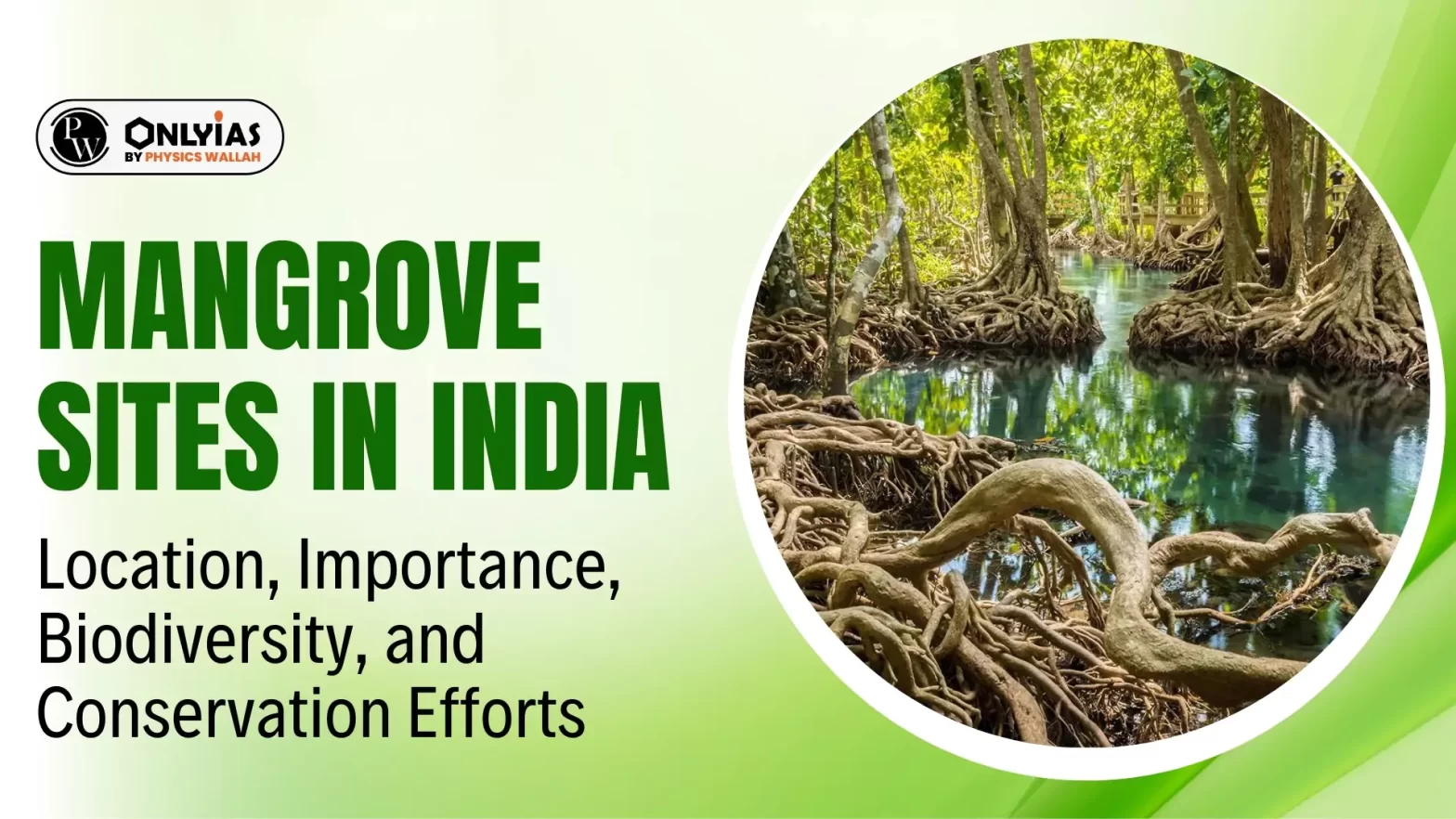
Mangroves are a type of coastal plant growth found along sheltered tropical and subtropical coastlines. These shrubs and trees thrive in areas with high water levels during spring tides and demonstrate a remarkable ability to withstand saline water.
India is home to about 3 percent of the total mangrove cover in South Asia, with the Sundarbans in West Bengal and Bhitarkanika mangroves in Odisha being the richest in diversity.
They have the ability to survive in waterlogged and anoxic soil, and to tolerate brackish water with the adaptations.
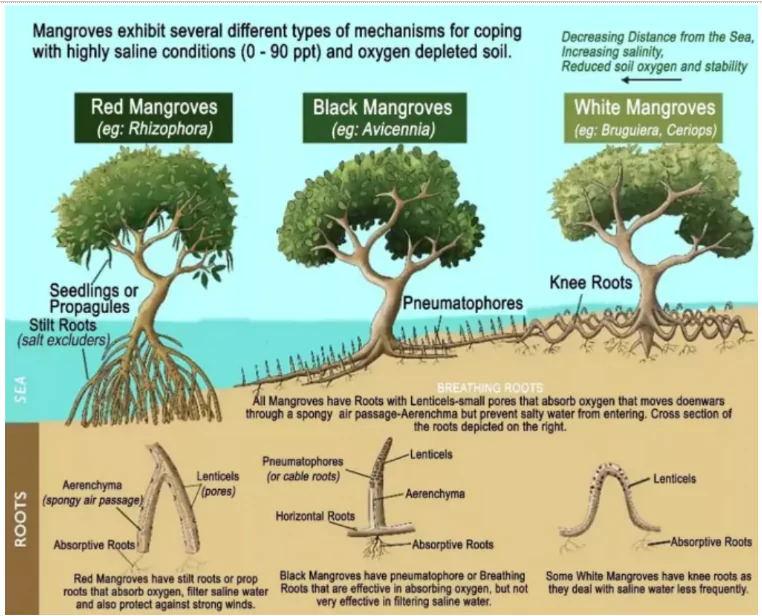
As per Global Forest Resource Assessment, 2020 (FRA 2020), world over, 113 countries have Mangrove forests covering an estimated 14.79 million hectares. The largest Mangrove area is reported in Asia (5.55 mh), followed by Africa (3.24 mh), North and Central America (2.57 mh) and South America (2.13 mh).
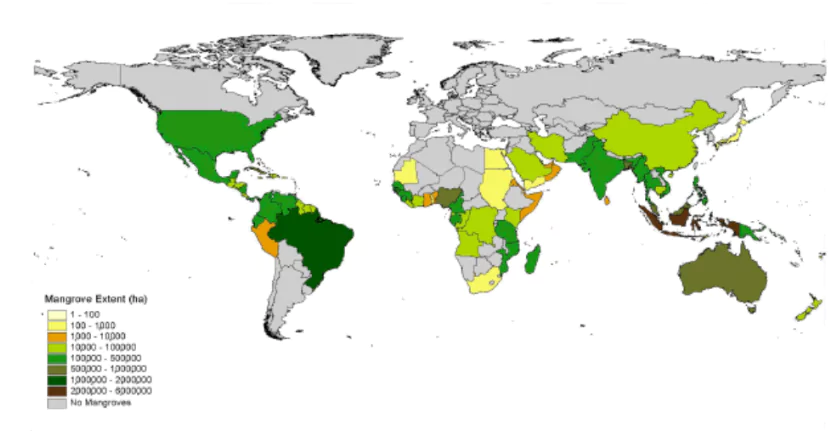
Mangroves are found in coastal areas featured by tidal waters, brackish water, and saline/salty soils. India is home to diverse mangrove habitats, ranging from the Sundarbans in the east to the Gulf of Kutch in the west. These mangrove forests provide crucial ecological services and support various species of plants and anima and aquatic species, making them Important ecosystems for coastal communities and biodiversity conservation efforts.
| State | Mangrove Sites | Area Covered (sq km) |
| West Bengal | Sundarbans | 4,260 |
| Odisha | Bhitarkanika | 672 |
| Andhra Pradesh | Krishna Wildlife Sanctuary, Godavari Wildlife Sanctuary | 303 |
| Gujarat | Gulf of Kutch, Kori Creek, Jamnagar | 1,139 |
| Maharashtra | Ratnagiri | 158 |
| Goa | Cumbarjua Canal | 2 |
| Tamil Nadu | Pichavaram, Muthupet | 304 |
| Karnataka | Aghanashini, Sharavathi Delta | 170 |
| Kerala | Vembanad, Kannur | 248 |
| Andaman & Nicobar | North, Middle, and South Andaman, Ritchie’s Archipelago | 8,249 |
| Mizoram | Saiha, Lengteng Wildlife Sanctuary | 10 |
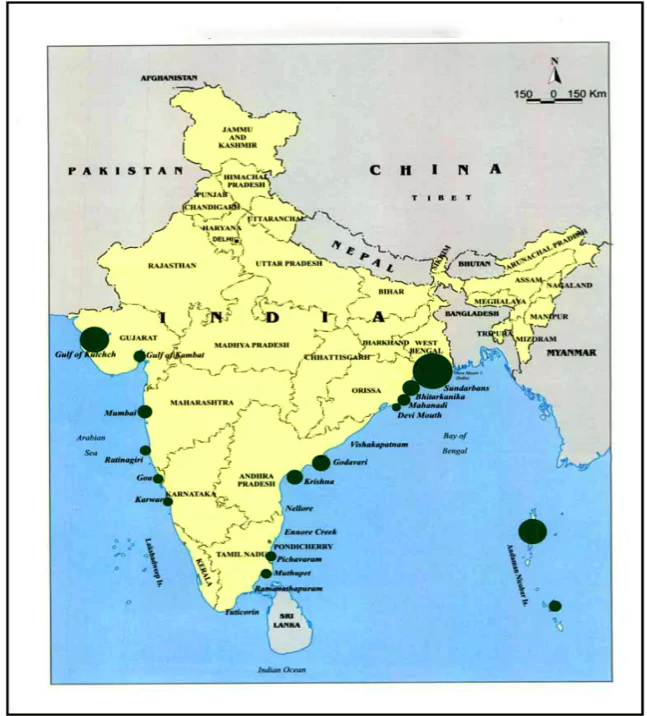
According to the State of Forest Report 2021 in India, the assessment offers distinctive Facts about the stats and data of mangrove cover throughout the country.
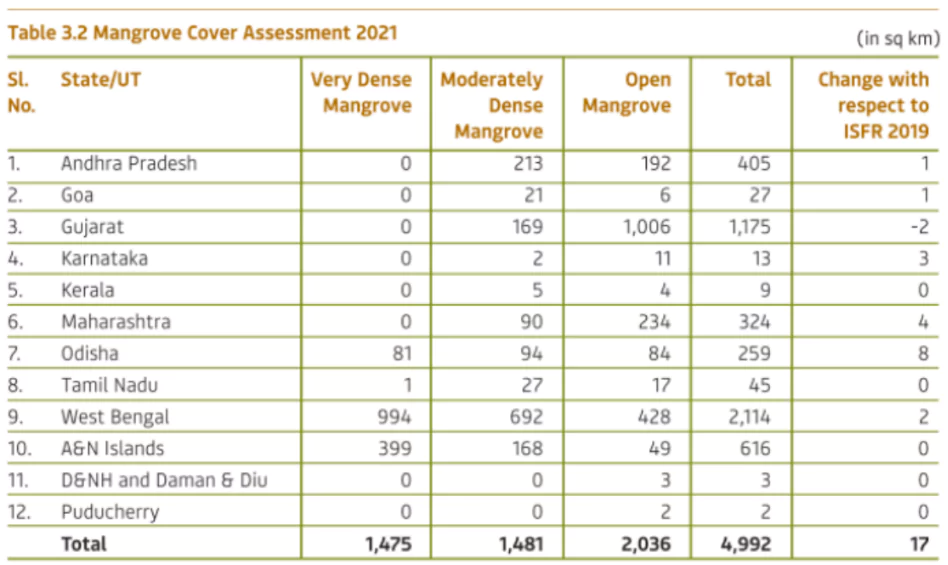
To safeguard India’s mangrove forests, various national and international initiatives have been implemented. Important species of Mangrove ecosystems in India include Avicennia officinalis, Rhizophora mucronata, Sonneratia alba, Avicennia alba, Bruguiera cylindrica, Heritiera littoralis, Phoenix paludosa, Morinda citrifolia & Ceriops tagal.
Mangroves in India serve as Important coastal ecosystems, Serving habitat for diverse flora and fauna and acting as natural defense against erosion and storm surges. These mangrove forests have a crucial role in carbon sequestration, helping mitigate the effects of climate change, while also supporting local livelihoods through fisheries and ecotourism.
| Must Read | |
| NCERT Notes For UPSC | UPSC Daily Current Affairs |
| UPSC Blogs | UPSC Daily Editorials |
| Daily Current Affairs Quiz | Daily Main Answer Writing |
| UPSC Mains Previous Year Papers | UPSC Test Series 2024 |
<div class="new-fform">
</div>

Latest Comments